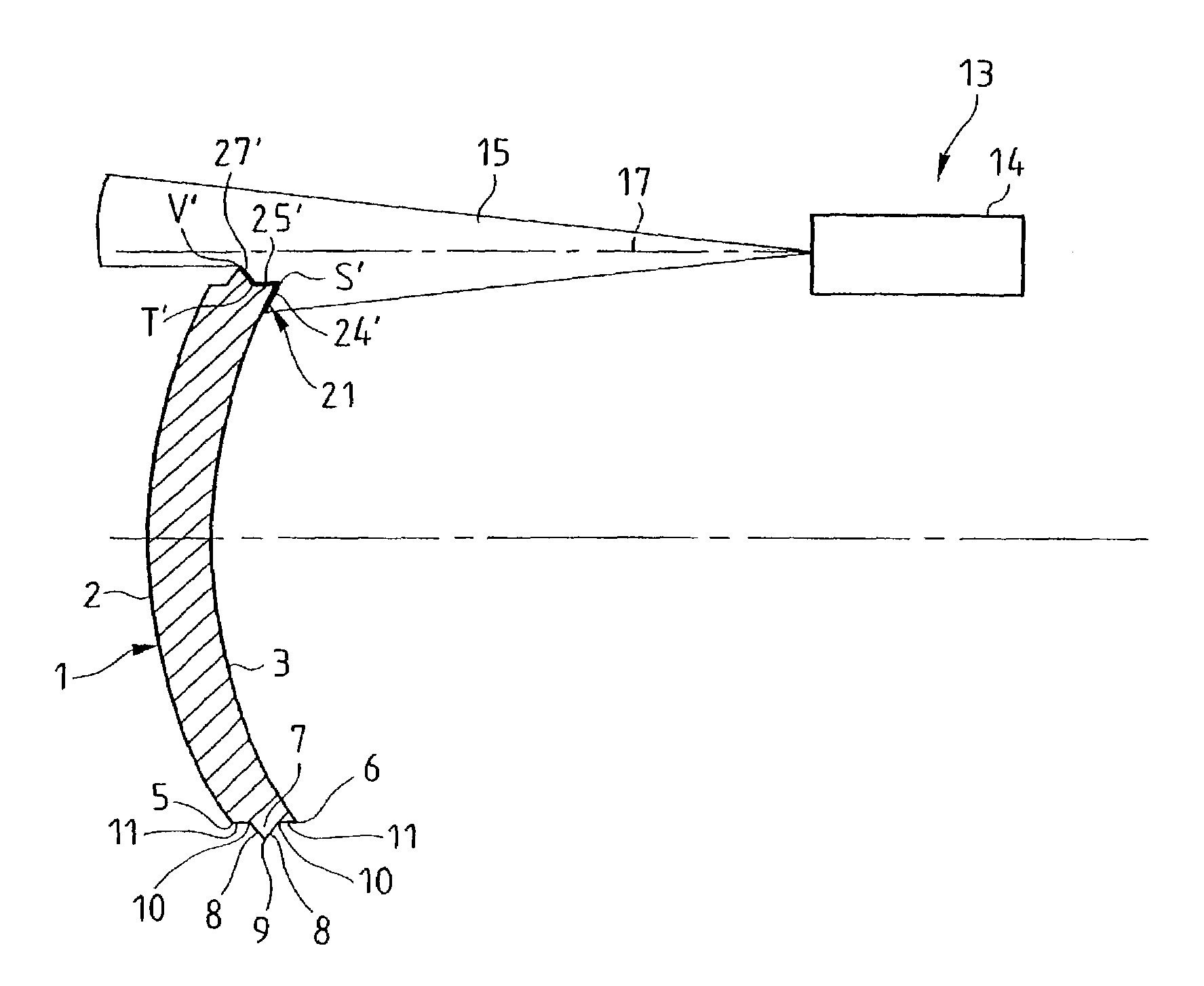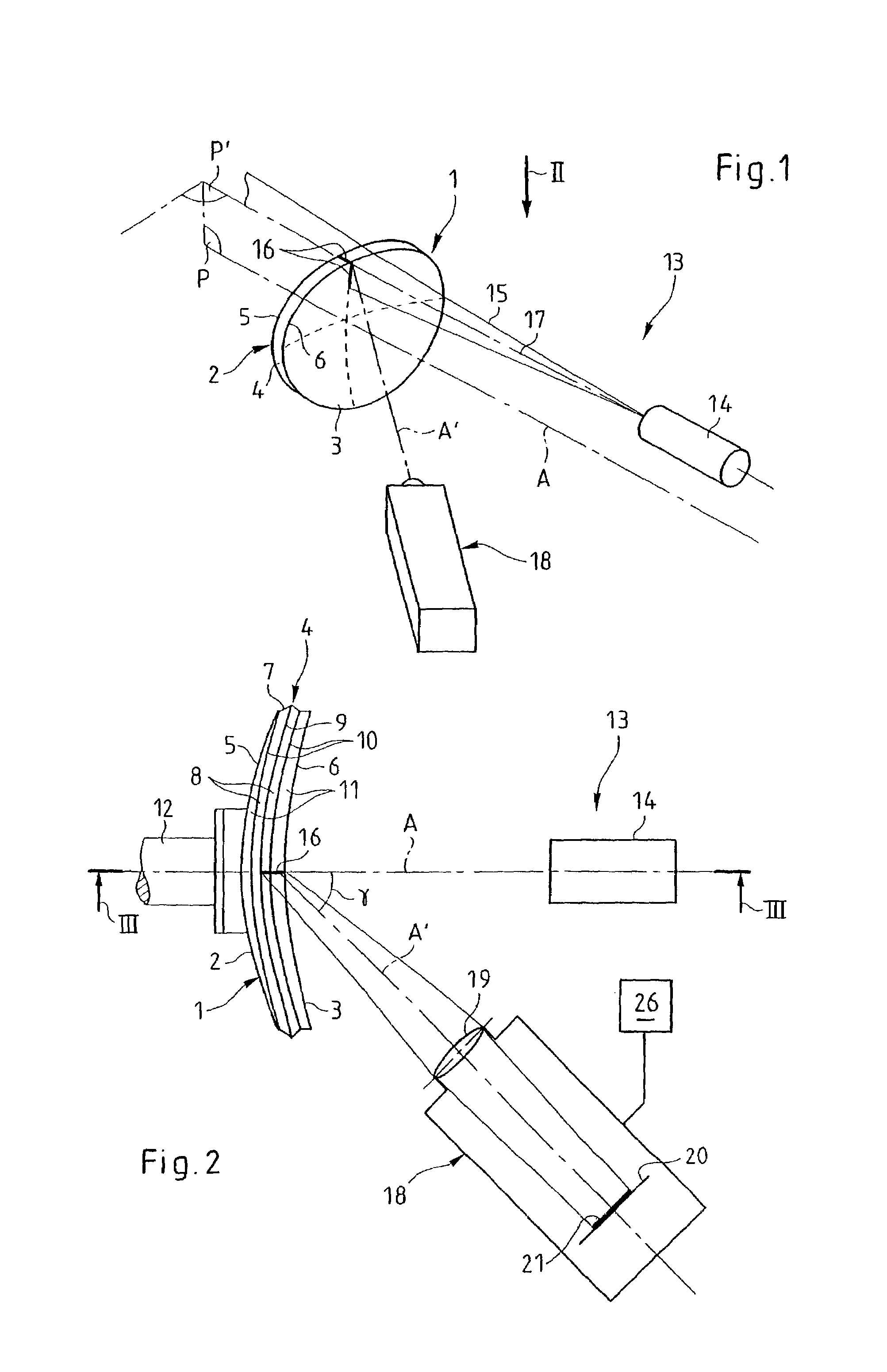Process for plotting the shape of a contour of a previously machined ophthalmic lens
- Summary
- Abstract
- Description
- Claims
- Application Information
AI Technical Summary
Benefits of technology
Problems solved by technology
Method used
Image
Examples
Embodiment Construction
[0051]In FIG. 1 an ophthalmic lens 1 is shown which has two optical surfaces constituted respectively by a so-called front face 2 and a so-called rear face 3 which are opposed, linked by a rim 4 which was initially cylindrical with a circular profile but which, after a machining operation, has a contour approximately corresponding to that of a ring of the spectacle frame in which this lens 1 is intended to be mounted.
[0052]The lens 1 has at the junction of its rim 4 and its front face 2 a peripheral front edge 5 which radially delimits the front face 2 and, at the junction of its rim 4 and its rear face 3, a peripheral rear edge 6 which radially delimits the rear face 3.
[0053]In a first case, the rim 4 of the lens 1 is cylindrical because it has been subjected to only one trueing operation and must also be subjected to one or more complementary finishing operations.
[0054]In a second case, the rim 4 of the lens 1 is also cylindrical, but for a different reason: it has been subjected ...
PUM
 Login to View More
Login to View More Abstract
Description
Claims
Application Information
 Login to View More
Login to View More - R&D
- Intellectual Property
- Life Sciences
- Materials
- Tech Scout
- Unparalleled Data Quality
- Higher Quality Content
- 60% Fewer Hallucinations
Browse by: Latest US Patents, China's latest patents, Technical Efficacy Thesaurus, Application Domain, Technology Topic, Popular Technical Reports.
© 2025 PatSnap. All rights reserved.Legal|Privacy policy|Modern Slavery Act Transparency Statement|Sitemap|About US| Contact US: help@patsnap.com



